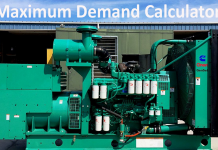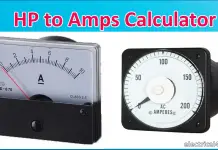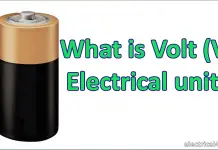WHAT IS A BATTERY?
A battery, in concept, can be any device that stores energy in the form of chemical energy. At the same time battery is converting electrical energy to chemical energy during charging time and chemical energy to electrical energy during discharging time.
Common use of the word, “battery,” however, is limited to an electro- chemical device that converts chemical energy into electricity, by use of a galvanic cell. A galvanic cell is a fairly simple device consisting of two electrodes (an anode and a cathode) and an electrolyte solution. Batteries consist of one or more galvanic cells.
[wp_ad_camp_2]
How Does a Battery Work?
Electrodes (two plates, each made from a different kind of metal or metallic compound) are placed in an electrolyte solution.
External wires connect the electrodes to an electrical Load (a light bulb in this case). The metal in the anode (the negative terminal) oxidizes, releasing negatively charged electrons and positively charged metal ions.
The electrons travel through the wire (and the electrical load) to the cathode (the positive terminal). The electrons combine with the material in the cathode. This combination process is called reduction, and it releases a negatively charged metal-oxide ion
At the interface with the electrolyte, this ion causes a water molecule to split into a hydrogen ion and a hydroxide ion. The positively charged hydrogen ion combines with the negatively charged metal-oxide ion and becomes inert.
The negatively charged hydroxide ion flows through the electrolyte to the anode where it combines with the positively charged metal ion, forming a water molecule and a metal-oxide molecule. In effect, metal ions from the anode will dissolve into the electrolyte solution while hydrogen molecules from the electrolyte are deposited onto the cathode.
When the anode is fully oxidized or the cathode is fully reduced, the chemical reaction will stop and the battery is considered to be discharged.
[wp_ad_camp_2]
Recharging a battery is usually a matter of externally applying a voltage across plates to reverse the chemical process. Some chemical reactions, however, are cult or impossible to reverse. Cells with irreversible reactions are commonly Known as primary cells, while cells with reversible reactions are known as secondary cells. It is dangerous to attempt to recharge primary cells
The amount of voltage and current that a galvanic cell produces is directly related to the types of materials used in the electrodes and electrolyte. The length of time the cell can produce that voltage and current is related to the amount of active material in the cell and the cell’s design.
Every metal or metal compound has an electromotive force, which is the propensity of the metal to gain or lose electrons in relation to another material. Compounds with a positive electromotive force will make good anodes and those A battery with a negative force will make good cathodes. The larger the difference between A battery the electromotive forces of the anode and cathode, the greater the amount of energy that can be produced by the cell.












![What is Arc Chute? Types, Working Principle [Video Included] arc chute working priciple](https://electrical4u.net/wp-content/uploads/2020/06/arc-chute-218x150.png)